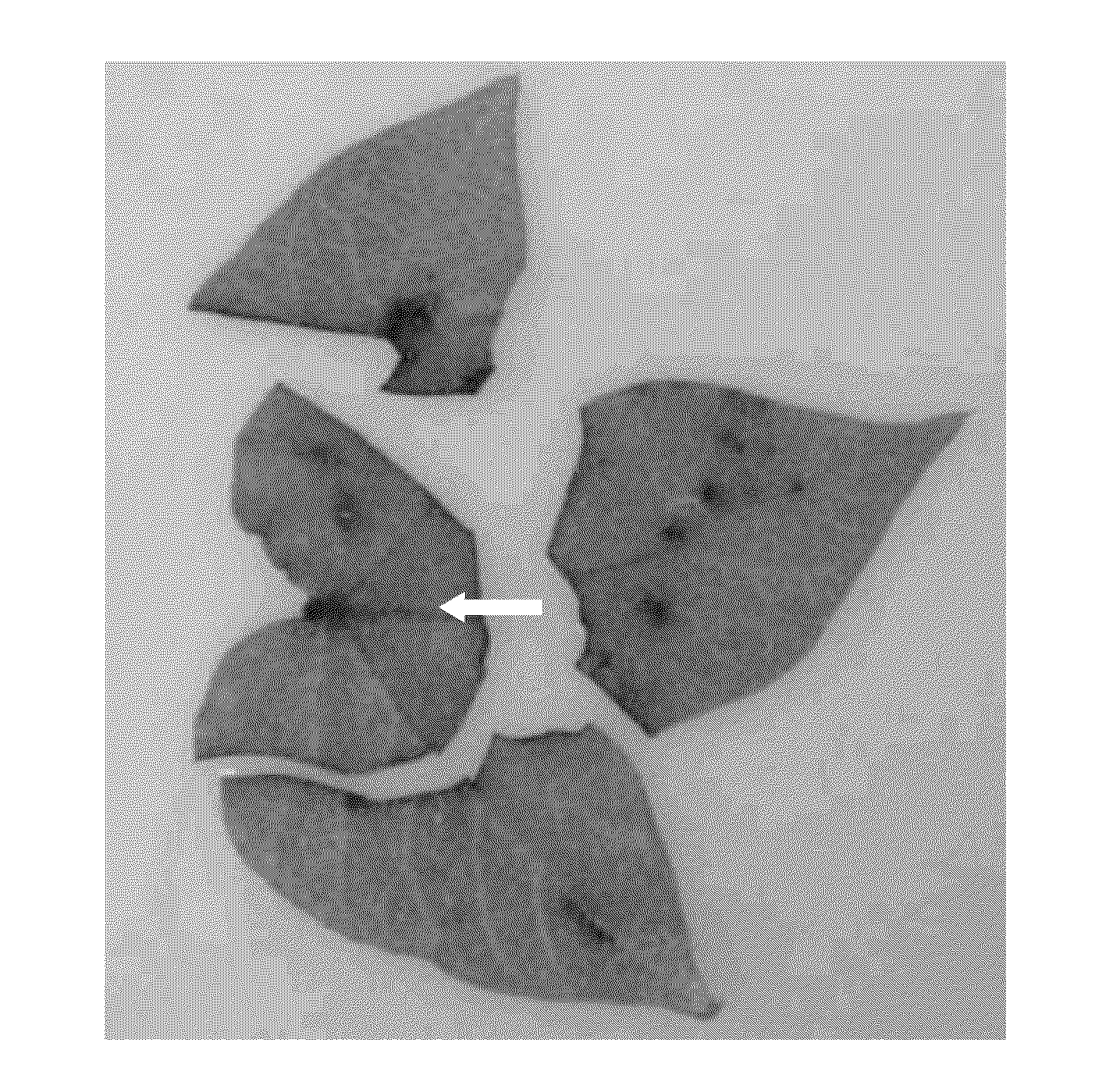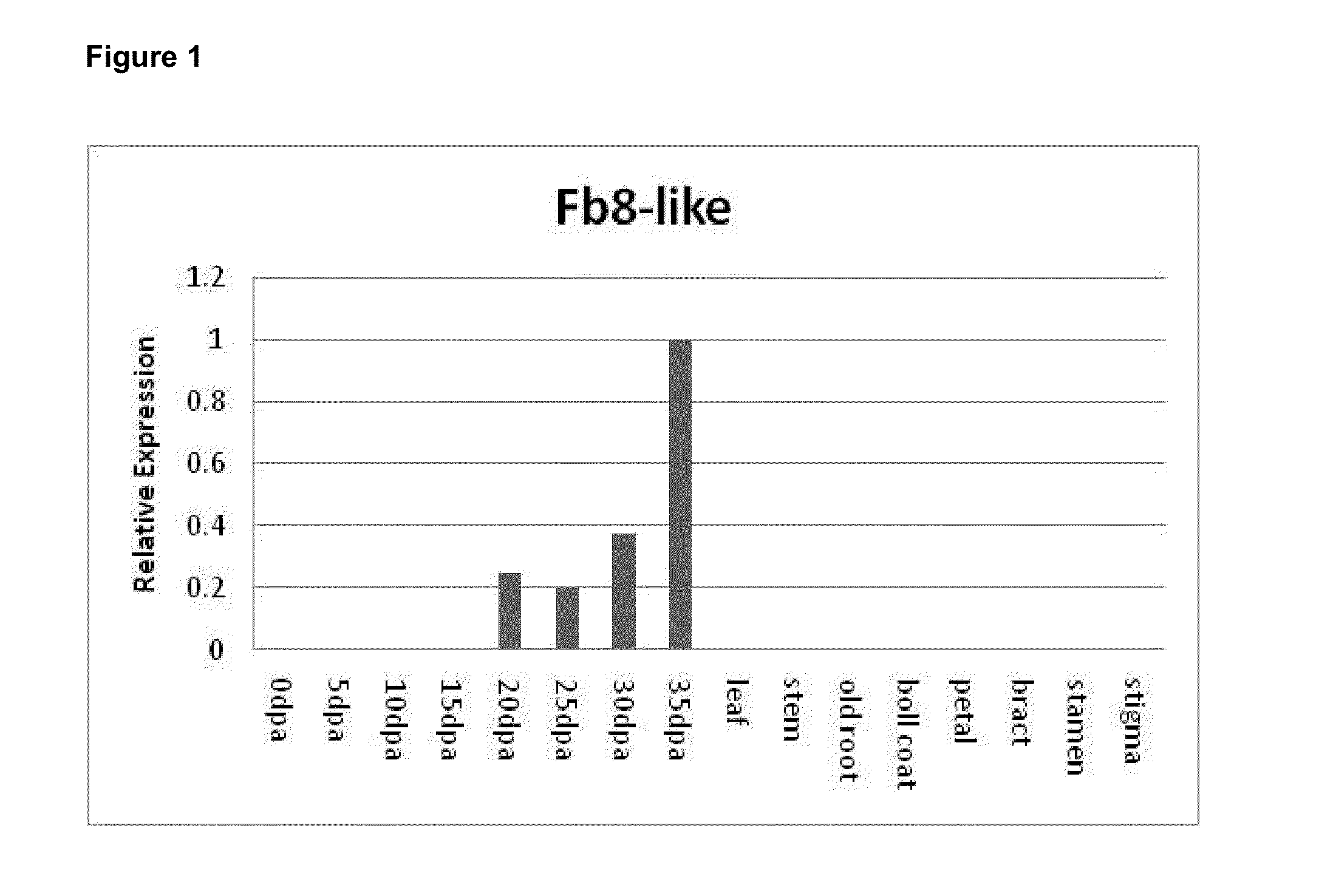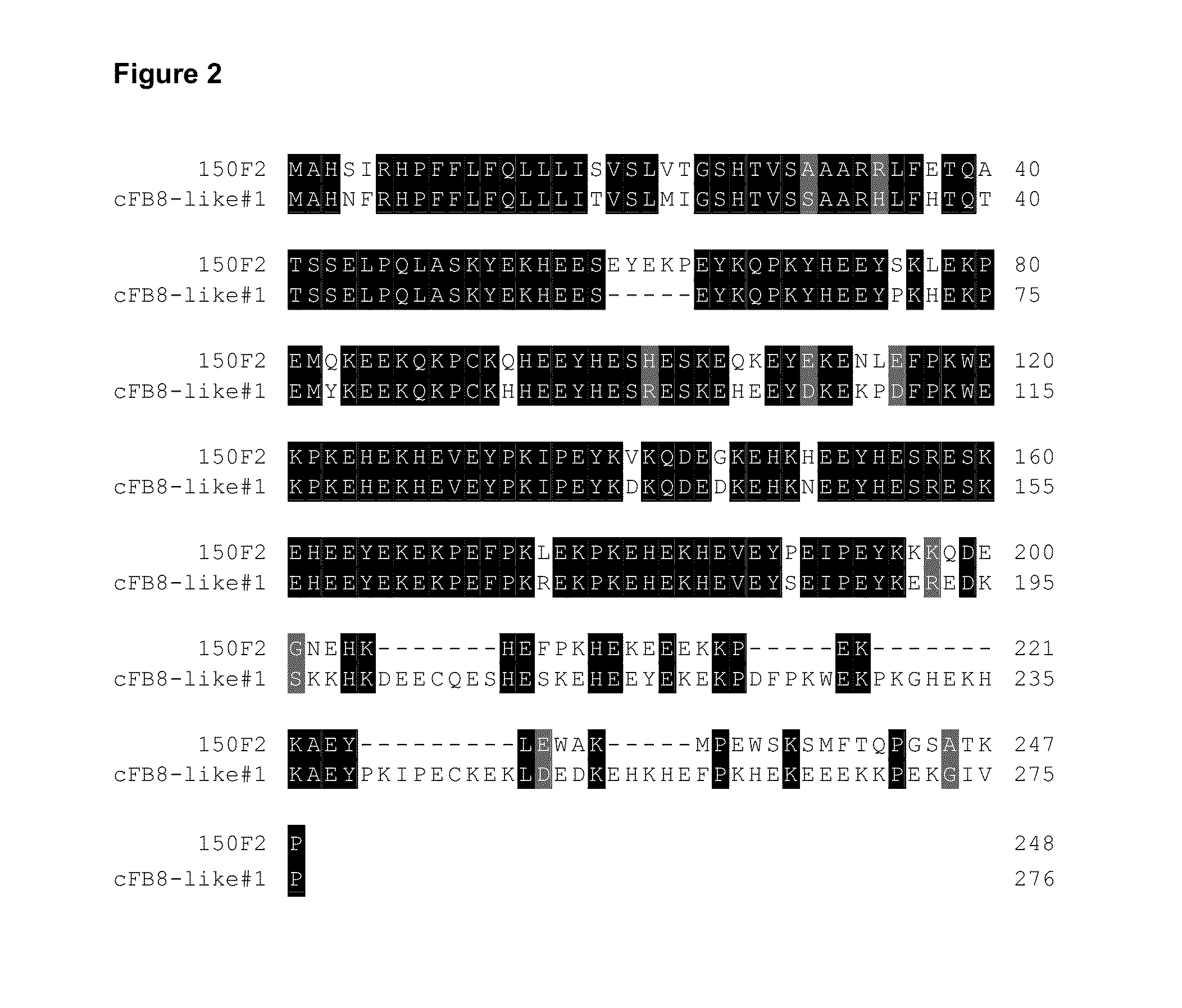Novel fiber-preferential promoter in cotton
a promoter and fiber technology, applied in the field of expression cassettes, can solve the problems of unclear control of gene expression by these factors
- Summary
- Abstract
- Description
- Claims
- Application Information
AI Technical Summary
Benefits of technology
Problems solved by technology
Method used
Image
Examples
example 1
Identification of Candidate Genes Expressed Preferentially in Fibers
[0131]A list of about 450 potential fiber expressed genes was generated from an analysis of the literature and public microarray data and this was narrowed down through a process of examining the frequency of occurrence of ESTs homologous to those genes in public databases (as a surrogate of transcript abundance) and then followed up with quantitative RT-PCR across a range of tissue types and fiber ages. It was decided to particularly look at the gene F203F9 (DR176749, Fb8-like). This is a gene originally identified by Liu et al. (2006) by suppression-subtractive hybridisation from the fibers of G. hirsutum cultivar TM-1. Liu et al., 2006 noted that clone F203F9 (lodged as Genbank accession DR176749) was predominantly expressed in 20 dpa fibers, but not expressed in 10 dpa fibers. In that publication the EST was annotated as very similar to the G. barbadense cDNA Fb8-like (AF531368), but is also closely related to t...
example 2
Isolation of an Fb8-Like Promoter
[0139]The insert from the cFB8-like#1 cDNA clone was excised, gel purified and used as a probe to screen a large insert BAC library from G. hirsutum cv Acala Maxxa (GH_MBb, Clemson Genomics Institute) according to the suppliers recommended protocol (http: / / www.genome.clemson.edu / resources / protocols). Several strong hybridising BACs were obtained, DNA prepared and grouped by restriction pattern type using Southern blotting. Sequencing with primers in the coding region of the clones with unique restriction patterns identified the clone BAC150F2. BAC150F2 encoded a related but slightly smaller protein (FIG. 2).
[0140]The expression pattern of the Fb8-like gene encoded by BAC150F2 was confirmed with primers specific to this gene using Q-PCR. The primers used were 150F2_F 5′-tggctcatagcattcgtcac-3′ (SEQ ID NO: 8) and 150F2_R 5′-ccaattgtgggagctctgat-3′ (SEQ ID NO: 9) from near the N-terminal end of the coding region and the cotton ubiquitin gene was used as...
example 3
Production of an Expression Construct Comprising pFB8-Like Operably Linked to GUS
[0142]A 1437 bp fragment of the promoter upstream from the ATG codon was amplified from BAC DNA of BAC150F2 using the gateway primers gwFb8-likePro (150F2)_F 5′-ggggacaagtttgtacaaaaaagcaggctcatgattagttagatcaagcttttgagt (SEQ ID NO: 11)-3′ and gwFb8-likePro (150F2)_R 5′-ggggaccactttgtacaagaaagctgggtggttaatcaaatagaaaga aaagaacgt-3′ (SEQ ID NO: 12) (gene-specific sequences are in bold) containing the attB1 and attB2 recombination sites for in vitro recombination using the Gateway cloning system (Invitrogen). PCR amplification from BAC DNA followed by PEG cleanup was according to the manufacturer's instructions and in vitro recombination using the BP reaction with the intermediate vector pDONR201 (Invitrogen) and transformation into DHSalpha cells resulted in the production of pDONR / gwFb8-like (150F2). The intermediate vector was sequenced with pDONR-F and pDONR-R primers (Invitrogen) and then recombined int...
PUM
| Property | Measurement | Unit |
|---|---|---|
| nucleic acid | aaaaa | aaaaa |
| fiber properties | aaaaa | aaaaa |
| length | aaaaa | aaaaa |
Abstract
Description
Claims
Application Information
 Login to View More
Login to View More - R&D
- Intellectual Property
- Life Sciences
- Materials
- Tech Scout
- Unparalleled Data Quality
- Higher Quality Content
- 60% Fewer Hallucinations
Browse by: Latest US Patents, China's latest patents, Technical Efficacy Thesaurus, Application Domain, Technology Topic, Popular Technical Reports.
© 2025 PatSnap. All rights reserved.Legal|Privacy policy|Modern Slavery Act Transparency Statement|Sitemap|About US| Contact US: help@patsnap.com



